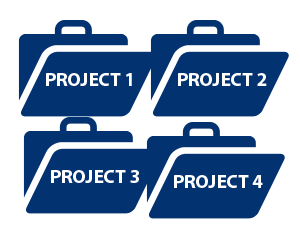Yesterday I covered project monitoring, the documents needed and the tools that the project manager can use to achieve the correct output. Today I will try to give further explanation on why project monitoring is necessary. Imagine driving going to a wedding in a distance town where you have never been to before. You will definetly need a GPS and also ensure that you leave in good time. You don’t want to arrive late and walk in to the wedding ceremony, long after the bride and the groom are through with the wedding. This is similar to project monitoring, where you need the correct tools, GPS, to ensure that the project manager has a proper control on the pace of the project. It helps to dictate the pace and acts as an indicator on the status of the project. It is the pulse telling us how much alive the project is. Without project monitoring it won’t be possible to know the problems which rise during execution phase and may need better solutions for progression to be realized. Effective monitoring helps in knowing if the intended results are being achieved as planned, what actions are needed to achieve the intended results during the project execution, and whether these initiatives are creating a positive impact towards the project execution. In a nutshell, it can be said:
Assessment of project outcome: To know how the objectives are being met and the desired changes being met.
Process planning improvement: It helps in adapting to better contextual and risk factors which affect the research processes, like social and power dynamics.
Learning promotion: Gives insight on various approaches to participation which influences the outcomes.
Better understanding of stakeholders perspectives: Through direct participation in the process of monitoring and evaluation, the PM is able to learn about the people who are involved in the research project. This gives better understand of their values and views, as well as design methods to resolve conflicting views and interests.
Enhance accountability: To assess if the project has been effectively, appropriately and efficiently executed, so that they can be held accountable.
But how does the process actually work like?
3 Ways to Track and Re-Plan a Project
Rarely do projects flow as envisioned in the plan. There is always someone sick, a missing resource, dependency that is not available and so on. It is therefore important as a project manager to ensure that there is a fall back plan when needed. The following three approaches can be suitable in ensuring that in such times, the project management is not caught flat-footed.
- Check and understand the progress of the project: Before starting to re-plan your project, you should be sure of the current state and status of the work. Setting up a meeting for the whole team together to get to know about the updates of the current work, upcoming tasks and issues will be beneficial. Also, recognize the important milestones in this meeting.
- Search for and Manage Exceptions: Stay on a look-out for exceptions like risks, issues and change requests. Open issues will have to be resolved so that roadblocks can be removed, and a risk mitigation plan will have to be developed.
- Re-plan the project: You have an idea of how to re-plan the project. The following steps will help you do so:
- Keep the important project documents updated, which includes the project charter.
- Share the new plan with the shareholders.
- As per the demand, re-assign the work. Communicate with the team members regarding the new assignments and send automated reminders to them.
- As required, make changes on the project site with the updates reports and dashboards.
In conclusion, project monitoring is important in making the project management plan work to meet the project objectives. It is a part of the project and project management, not an addition to it. Given the data about the team, the project and the prediction of overdue, project managers can customize the project plan and address issues before they happen. With project monitoring, you can identify the most efficient way to manage your resources and continually assess your project status, so you can ensure your project success.


